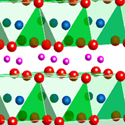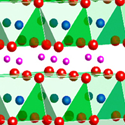Odd topological superconductor
Bismuth selenide ( ), a typical topological insulator, recently turned superconductor after careful intercalation of copper between the layers that make up this material. Apart from questions regarding how the material achieves superconductivity, the nature of the latter and its relation to the topological insulator state are attracting much interest.
Now, in an article published as a Rapid Communication in Physical Review B, Pradip Das and collaborators from the University of Tsukuba in Japan study the superconducting version of using magnetization measurements. The researchers find differences in the behavior of vortices from what is found in usual type-II superconductors. They conclude that their observations are consistent with odd-parity pairing and that the paired electrons form a spin-triplet state driven by strong spin-orbit interactions in the material, which is in agreement with recent theoretical predictions. – Alex Klironomos





